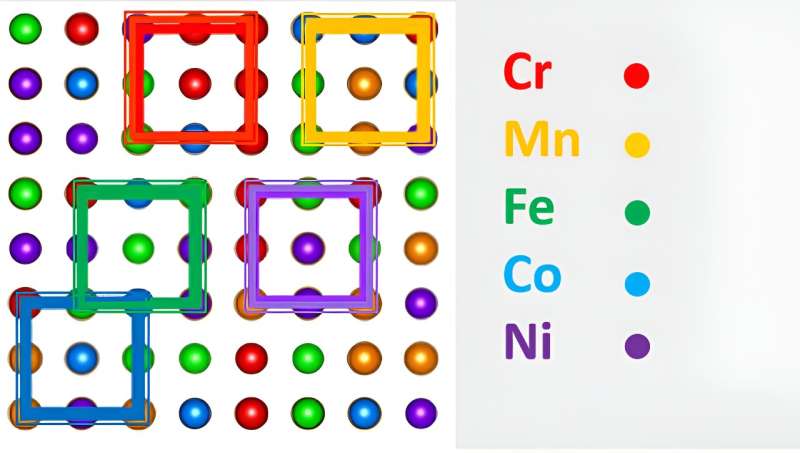This article has been reviewed according to Science X's editorial process and policies. Editors have highlighted the following attributes while ensuring the content's credibility:
fact-checked
peer-reviewed publication
trusted source
proofread
BESSY II: Local variations in the atomic structure of high-entropy alloys

High-entropy alloys can withstand extreme heat and stress, making them suitable for a variety of specific applications. A new study at the X-ray synchrotron radiation source BESSY II has now provided deeper insights into the ordering processes and diffusion phenomena in these materials.
The study involved teams from HZB, the Federal Institute for Materials Research and Testing, the University of Latvia and the University of Münster and has been published in Nano Research.
The team analyzed samples of a so-called Cantor alloy, which consists of five 3D elements: chromium, manganese, iron, cobalt and nickel. The samples of crystalline structures (face-centered cubic, fcc) were annealed at two different temperatures and then shock frozen.
The study focused on unraveling local atomic structures in single crystalline samples cooled from either a high-temperature (HT) state annealed at 1,373 Kelvin or a low-temperature (LT) state annealed at 993 Kelvin.
To analyze the local environments of the individual elements in the samples, the team used a well-established method: element-specific multi-edge X-ray absorption spectroscopy (EXAFS). To interpret the measurement data in the most precise and unbiased manner, the team carried out a Reverse Monte Carlo (RMC) based analysis.
"In this way, we have been able to reveal, both qualitatively and quantitatively, the peculiarities of the characteristic local environments of each principal components of the alloy at the atomic scale," explains Dr. Alevtina Smekhova from HZB.
In particular, the spectroscopic results also provide insights into the diffusion processes in HEAs. For example, it was directly demonstrated why the element manganese diffuses fastest in the HT samples, while the element nickel diffuses faster in the LT samples as it was found earlier from diffusion experiments.
"These results help us to better understand the relationship between the local atomic environment and the macroscopic properties in these alloys," explains Smekhova.
More information: Smekhova A, et al. Anomalies in the short-range local environment and atomic diffusion in single crystalline equiatomic CrMnFeCoNi high-entropy alloy. Nano Research (2023) DOI: 10.1007/s12274-024-6443-6. www.sciopen.com/article/10.1007/s12274-024-6443-6
Journal information: Nano Research
Provided by Helmholtz Association of German Research Centres




















